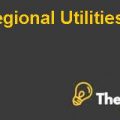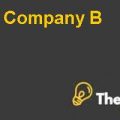American cancer society: Access to care Case Study Analysis
PEST Analysis:
Political:
Although the political environment of the United States was considered stable, with the increase in the expansion regarding access to care i.e. change in the public policy from 501 (c) 3 to 501 (c) 4would lead to some political issues. But one of the key benefits of advocacy i.e. the base of the new Access to care had led to doubled budget by the federal government. In contradiction, the political issues were mainly helped by the development of the policy principles through the formation of a Policy Review Group.
Economic:
According to the facts represented in case, an estimated 10 percent decline in the cancer death had significantly added an approximate of $5 trillion in the economic value of the state. Thus, with respect to the 2015 goal, a 50 percent decline in the cancer deaths positively favors the significant growth of the economy with life-saving of no less than the half-million population of the state.
Social:
The launch of Access of care ad had shown no change on an approximate of 49 percent of the people which means that they did not take the fact of cancer causes under consideration as a serious matter to consider. This is primarily due to the lifestyle of the people which is mainly associated withpoor nutrition or diet, obesity, physical inactivity and many other factors.
Technological:
With respect to the economic growth and the use of innovative technology, the use and release of a hazardous substance in the environment have been commonincluding emission of green-house gases through theuse of non-environmental friendly processes.Change in the manufacturing processes i.e. environmental requiresa high investment which can be significantly done due to the developed economy.
Alternative Strategies:
Alternative 1: Donor membership program
Pros:
- It significantly provides the non-profit organization with unrestricted and immediate funds.
- It potentially serves as the base for ongoing and predictable funding.
- It providesindividual donors to have an ongoing and intimate relationship with the organization.
- It provides confirmation of the secured donations about their contribution to a particular project in order to directly influence the cause.
Cons:
- With the increased focus on securing donors, the development of such a program might tend to be expensive and require commitment which might lead to scaringoff donors.
- The possibility of overlook management would result in a guaranteed failure as it mainly requires more attention.
- Leaving the communication on donor slips might result in the breeding of differences which may lessen the dedication of continue membership.
Alternative 2: Promote Insurance Program:
Pros:
- It would clear the misconception of the individuals regarding the key objective and the Access to care campaign.
- It would result in the regain of the individual donors who have restricted their donations based on their confusion over the use of their money.
- It significantly increases awareness among the people for availing the services provided by the organization to the patients who were unable to afford their treatment expenses.
- It would bring improvement in the relation between the individual donor and the organization.
Cons:
- It requires additional cost in promoting the insurance program for clearing the misconception of individual donors.
- This would result in a declined focus of the organization over the Access to care strategy which is their 2015 goal that needs to be accomplished.
Alternative 3: Federated Funds for Non-Profits:
Pros:
- With the satisfaction of the fund criteria, federated funds are considered to be an advantage for non-profit organizations.
- It significantly assists in raising the donations and the funds required from individuals and other organizations with the ability to crack on their own.
Cons:
- It requires application submission in order to receive funds from the federated bodies for an extensive review of the financial as well as governance practices.
- The organization provided with fund have no control over the raised money by the organizational services.
- Getting involved in the federated fund portfolio requires time and might turn out to be arduous because of its requirements.
Implementation:
The implementation of the recommended strategy mainly involves the following steps:
Facilitators and barriers:
The facilitators in the promotion of the insurance program mainly include the management of the organization to differentiate their key focus objective from their core strategic approach, individual donors, employees, business environment, and increased cancer death rates. Whereas the one and only barrier in the implementation of the promotion of insurance program is an additional cost.
Training:
The training would be given to the entire staff and the service promoters and the advertising agency which is responsible for all the advertisements for ACS. The advertisement platforms mainly require social media platforms, websites, arrangement of different promotional events.
Timeline:
Each activity requires a specific time period such as planning, identification of facilitators and barriers (7 days), and resources required (7 days), measurement of the implementation (15 days )and evaluation (10 days).
Measurement:
The measurement of the implementation would mainly involve the risk assessment regarding the training and promotional events, response of individuals.
Evaluation:
The evaluation of the implementation would primarily be based on the response of the individuals and decline in the cancer death rates............................
This is just a sample partical work. Please place the order on the website to get your own originally done case solution.











